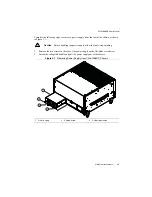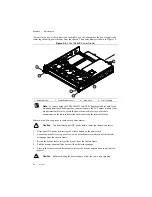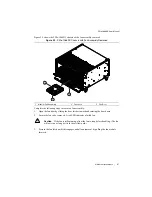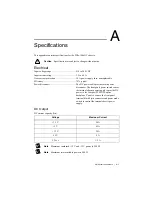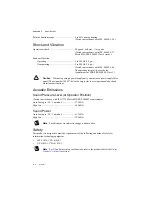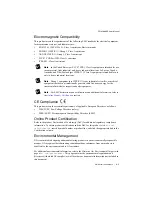
© National Instruments
|
2-17
The capability documentation for a PXI-1 chassis is contained in a
chassis.ini
file provided
by the chassis manufacturer. The information in this file is combined with information about the
system controller to create a single PXI-1 system initialization file called
pxisys.ini
(PXI System Initialization). The NI system controller uses MAX to generate the
pxisys.ini
file from the
chassis.ini
file.
Device drivers and other utility software read the
pxiesys.ini
and
pxisys.ini
file to
obtain system information. For detailed information about initialization files, refer to the PXI
specification at
www.pxisa.org
.
Trigger Configuration in MAX
Each chassis has one or more trigger buses, each with eight lines numbered 0 through 7 that can be
reserved and routed statically or dynamically. Static reservation
pre-allocates
a trigger line to prevent
its configuration by a user program. Dynamic reservation/routing/deallocation is
on the fly
within a user
program based upon National Instruments APIs such as NI-DAQmx. Static reservation of trigger lines
can be implemented by the user in MAX through the
Triggers
tab. Reserved trigger lines will not be
used by PXI modules dynamically configured by programs such as NI-DAQmx. This prevents the
instruments from double-driving the trigger lines, possibly damaging devices in the chassis. In the
default configuration, trigger lines on each bus are independent. For example, if trigger line 3 is asserted
on trigger bus 0, by default it will not be automatically asserted on any other trigger bus.
Complete the following steps to reserve these trigger lines in MAX.
1.
In the Configuration tree, click on the PXI chassis branch you want to configure.
2.
Then, in the right-hand pane, toward the bottom, click on the
Triggers
tab.
3.
Select which trigger lines you would like to statically reserve.
4.
Click the
Apply
button.
PXI Trigger Bus Routing
The PXIe-1066DC chassis can route triggers from one bus to others within the same chassis
using the
Trigger Routing
tab in MAX, as shown in Figure 2-9.
Note
Selecting any non-disabled routing automatically reserves the line in all
trigger buses being routed to. If you are using NI-DAQmx, it will reserve and route
trigger lines for you, so you won’t have to route trigger lines manually.
Complete the following steps to configure trigger routings in MAX.
1.
In the
Configuration
tree, select the chassis in which you want to route trigger lines.
2.
In the right-hand pane, select the
Trigger Routing
tab near the bottom.
3.
For each trigger line, select
Route Right
,
Route Outward From Middle
, or
Route Left
to route triggers on that line in the described direction, or select
Disabled
for the default
behavior with no manual routing.
4.
Click the
Apply
button.



















